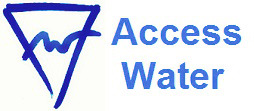WHO/UNICEF Report: Water, Sanitation and Hygiene in Health Care Facilities: status in low-and middle-income countries and way forward (by A. Hayter)
10 Key Findings
1. THE FOUNDATION FOR SAFE, PEOPLE HEALTH CARE
Improving the safety and quality of health care globally requires water, sanitation services (WASH) in all health care facilities.
Better WASH services in health care facilities results in higher quality of care; fewer health care associated infections; greater use of health services; and improvements in staff retention and morale.
All major initiatives to improve global health depend on access to basic WASH services in communities and health care facilities.
2. THE LIMITING FACTOR:
In low resource settings, WASH services in many healthcare facilities are absent.
Data from 54 countries, representing 66,101 facilities show that, 38% of health care facilities do not have an improved water source, 19% do not have improved sanitation and 35% do not have water and soap for handwashing. This lack of services compromises the ability to provide basic, routine services, such as child delivery and compromises the ability to prevent and control infections.
3. THE QUALITY ISSUE:
Estimates of water coverage in health care facilities decrease when reliability and safety of supplies is taken into account.
The most common definition of water services addressed only the presence of a water source in or near the facility, and did not consider continuity and safety of supplies. Where these were considered in assessments, coverage dropped by 50%. Furthermore, major surveys “count” a facility as having water services even if the water source is 500 meters away from the facility. This is far below WHO minimum standards.
4. THE INEQUALITY ISSUE:
Large disparities in WASH services in health care facilities exist between and within countries.
In some countries, for example Kenya, the nationwide estimate of access to WASH services in health care facilities is high (83%).
However, some districts within a country can have coverage estimates that are lower than than the national average by a factor of two or three.
5. BEYOND HOSPITALS – WASH AT EVERY LEVEL OF CARE:
Primary healthcare facilities have significantly lower WASH coverage than hospitals.
For those living in rural areas, primary health care facilities are frequently the first point of care.
As such, these facilities play a critical role in maternal and newborn health, and in responding to disease outbreaks, such as cholera or Ebola. Yet, without WASH, the ability of health care workers to carry out proper infection prevention and control measures and demonstrate to communities safe WASH practices is greatly compromised.
6. WHAT’S THE PLAN?
National plans for WASH in health care facilities are lacking.
Only 25% of 86 countries responding to a responding to the GLAAS survey, a UN-Water initiative coordinated by WHO, reported having a fully implemented plan or policy for drinking-water and sanitation in health care facilities.
In countries where data on provision of water and national plans were available, a greater proportion of facilities had water services. This suggests that national policies are an important element of
improving WASH in healthcare facilities.
7. THE RIPPLE EFFECT:
Improving services and WASH behaviours in health care facilities is achievable, and has positive ripple effects both for increased use of these facilities and on WASH practices in homes.
Country examples demonstrate that simple measures, such as improving cleanliness of toilets, or installing low-cost handwashing stations or water treatment, improve quality of care, increase the community’s use of healthcare facilities, and encourage community members to improve their WASH practices at home (such as regular handwashing with soap at critical moments).
8. BETTER DATA IS NEEDED:
Very little data is available, especially for sanitation and hygiene.
Data were available in 54, 36 and 35 low resource countries on water, sanitation and hygiene, respectively. Countries in Africa are most represented, while those in Asia are the least represented. This lack of data is a barrier towards better understanding and addressing WASH needs in health care facilities.
9. SECURING SUSTAINABILITY:
International recognition of the need for global monitoring of WASH in health care facilities against an agreed global target may spur the establishment or revision of national targets.
A proposed target of universal access to WASH services in health care facilities by 2030 has been recommended for inclusion in the post-2015 UN Sustainable Development Goals.
10. TAKING ACTION:
Urgent action is needed to address this situation.
Realizing improvements in WASH in health care facilities will require commitment from partners in both the health and environment sector at every level-local, national and global. WHO and UNICEF will strive to raise awareness, foster commitment and work, with partners, to develop and implement a global action plan.
This plan will include a number of components: strengthening national policies and standards, ensuring sufficient financing and trained staff to manage WASH in health care facilities, using risk-based approaches to prioritize and maintain improvements, and harmonizing and expanding monitoring.
